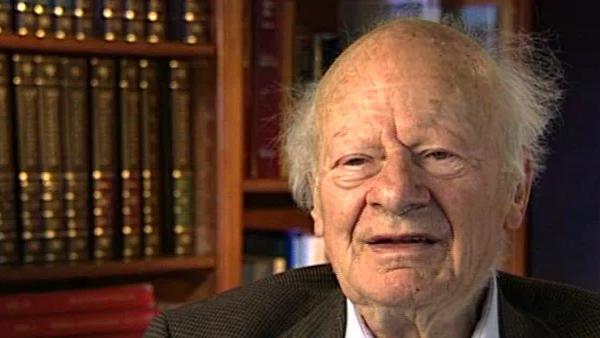NEXT STORY

The 1987 supernova
RELATED STORIES

NEXT STORY

The 1987 supernova
RELATED STORIES


|
Views | Duration | |
|---|---|---|---|
| 131. Stages in the stellar evolution theory | 1 | 291 | 03:34 |
| 132. Gerald Brown suggests solving the problem of supernova | 318 | 02:02 | |
| 133. Figuring how a supernova happens | 286 | 03:18 | |
| 134. James Wilson’s theory of supernovae | 301 | 03:02 | |
| 135. More on supernovae, the gain point | 251 | 03:05 | |
| 136. Supernova shocks | 262 | 03:44 | |
| 137. Accelerating shocks in supernovae | 247 | 02:58 | |
| 138. The 1987 supernova | 272 | 03:00 | |
| 139. Supernovas and the origin of the elements | 263 | 03:31 | |
| 140. Gerry Brown speculates on the formation of binary neutron stars | 256 | 02:35 |


This is not the reason why the shock accelerates. It is much simpler than that, namely once the shock reaches something like 300 kilometers from the center, then the gravity has decreased sufficiently that just the distribution of gravitational force, the decrease of gravitational force at larger distance, that is enough to accelerate the shock in the way I indicated from a few thousand to 10 or 20,000 kilometers per second. That I found out only during the last year, I'm still working on it, and I am still writing papers on it. I am now at paper number eight which I just finished writing and which is presently being typed. I believe that I have now understood the mechanism, namely neutrinos are emitted from the core which has accumulated gravitational energy; the neutrinos give energy to matter between the gain point and wherever the shock is; the gain point usually is around 100 kilometers from the center and I can calculate that you use about 10% of the neutrino energy and give 10% to the matter out there, and then these 10% serve to expel the outside of... of the star. Now that you see, the expulsion of the outside of the star and of course it gives you big fireworks, tremendous luminosity, very high temperature at the surface which then gradually declines. And we had the great good fortune that in 1987 there was a supernova, not in the galaxy, but in the neighboring galaxy, in the so-called Large Magellanic Cloud.
The late German-American physicist Hans Bethe once described himself as the H-bomb's midwife. He left Nazi Germany in 1933, after which he helped develop the first atomic bomb, won the Nobel Prize in Physics in 1967 for his contribution to the theory of nuclear reactions, advocated tighter controls over nuclear weapons and campaigned vigorously for the peaceful use of nuclear energy.
Title: Accelerating shocks in supernovae
Listeners: Sam Schweber
Silvan Sam Schweber is the Koret Professor of the History of Ideas and Professor of Physics at Brandeis University, and a Faculty Associate in the Department of the History of Science at Harvard University. He is the author of a history of the development of quantum electro mechanics, "QED and the men who made it", and has recently completed a biography of Hans Bethe and the history of nuclear weapons development, "In the Shadow of the Bomb: Oppenheimer, Bethe, and the Moral Responsibility of the Scientist" (Princeton University Press, 2000).
Tags: supernova, Magellanic Clouds, Large Magellanic Clouds
Duration: 2 minutes, 58 seconds
Date story recorded: December 1996
Date story went live: 24 January 2008